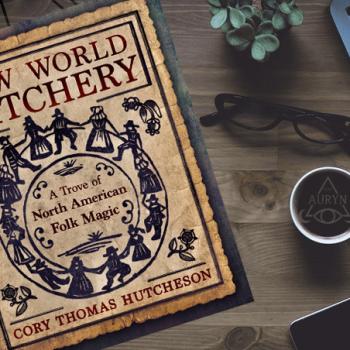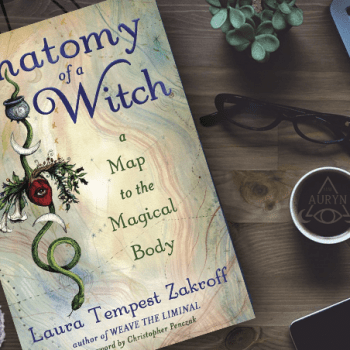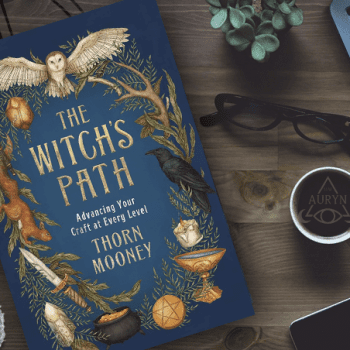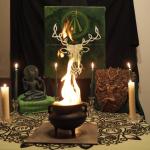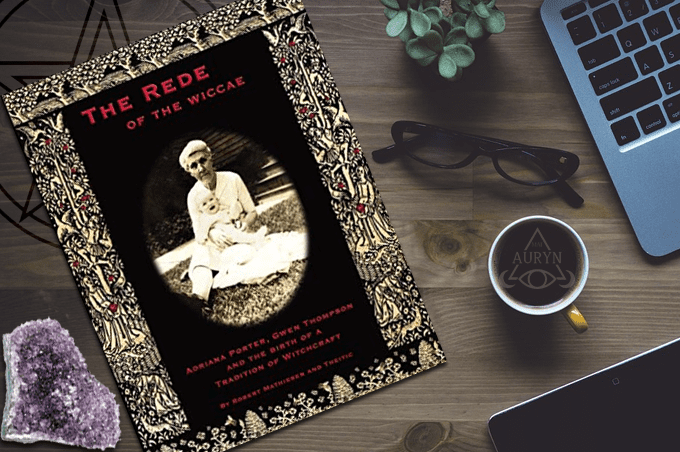
During the 1960s and 1970s, many folks came forward stating that they came from a long line of witchcraft that had nothing to do with Gerald Gardner. The most common narrative of these claims involved having the information passed down through the generations, often from a grandmother. These are often referred to as the “grandmother tales”. While most of these stories’ claims end up being debunked such as Sybil Leek and Lady Sheba, showing that the information they provided did indeed come from Gardner, there’s never been any thorough scholarly look into these grandmother tales. That is, until The Rede of the Wiccae: Adriana Porter, Gwen Thompson and the Birth of a Tradition of Witchcraft by Robert Mathiesen (Brown University) and Theitic (The Witches’ Almanac).
Gwen Thompson is known mostly for her “Rede of the Wiccae” which is the long-poem form of the Wiccan Rede. Thompson founded a New England witchcraft tradition surviving today, the New England Covens of Traditionalist Witches and claimed that her grandmother Adriana Porter had passed the tradition on as a hereditary practice and claimed lineage from the witches of Salem. Now, I know what you’re thinking, there weren’t any real witches in the Salem witch trials, right? The answer is perhaps not as clear as we think.
The book does a great job of remaining neutral in its investigation and one of the more interesting areas of the book is certain areas of Gwen’s tradition that parallel and differ from that of Gardner. Historians once thought that Gardner had also made up his claims about being initiated into a pre-existing tradition, until recent years where researchers such as Heselton have uncovered information that Gardner’s claims may indeed have truth behind them. The notion that there was indeed a pre-existing tradition of witchcraft where much of the information was hidden or destroyed, leaves open the possibility that others would have also come from this pre-Gardnerian tradition of Wicca.
Theitic, being an elder in her tradition, helped provide documents and research for Professor Robert Mathiesen, who took a critical look at the evidence and claims and performed his own research. The results are much more fascinating than you may think, and there’s much evidence to show that her family came from areas known for having professional cunning men, spiritualists, and astrologers. Her genealogy which is masterfully traced also shows that her family was involved with the Salem Witch Trials as both accusers and victims. While this isn’t concrete evidence to support her claims as being absolutely true, it does show that there are strong signs of these claims being very plausible, perhaps more than any other famous “grandmother tale”. Anyone interested in the historical aspects of Witchcraft is sure to enjoy this book.









